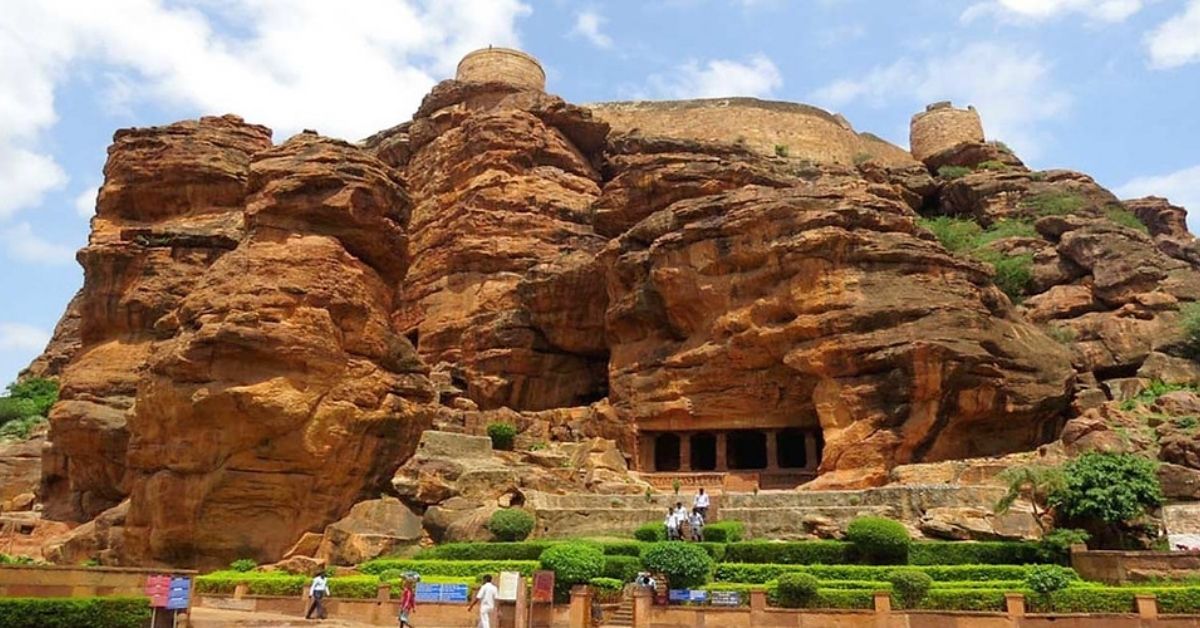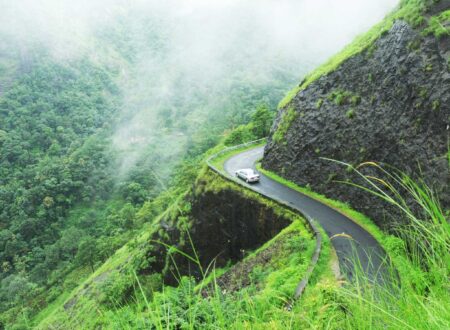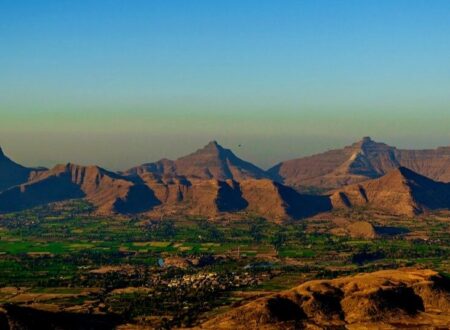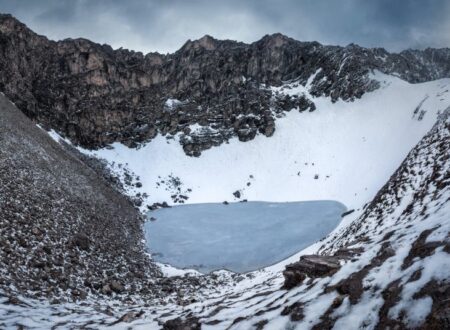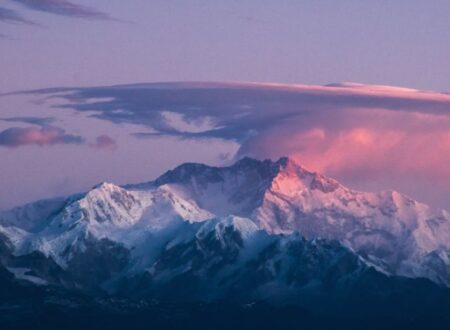The world is changing so rapidly these days that it’s difficult to catch up with it. Every week, new technology is introduced, every day a new trend is unleashed and every minute, a new place crops up for travel enthusiasts to explore. There is so much to see and there is so much to do that everyone is just running around trying to have it all and experience it all. In the midst of this fast life, sometimes we come across something that forces us to stop and think. One of those ‘something’ is the Bhimbetka cave. In this blog, we will explore the ancient rock hosts of Bhimbetka.
What are the Bhimbetka Caves?
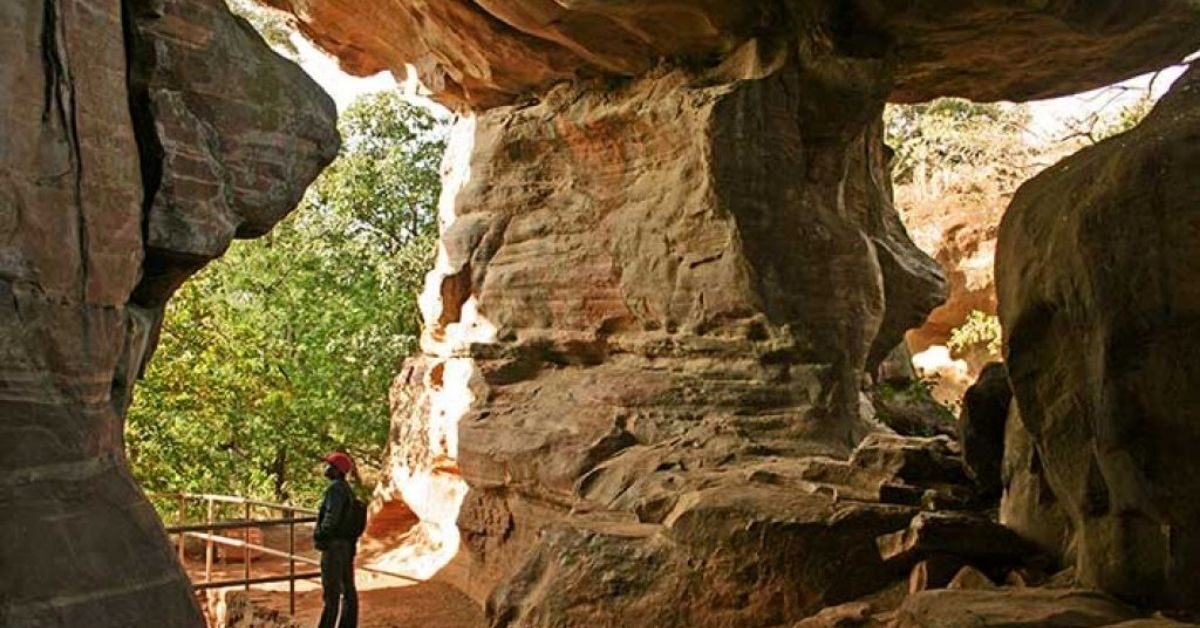
Primarily known as Bhimbetka Rock Shelters, this UNESCO World Heritage Site is an interconnected network of 750 caves in a 10 km radius. Discovered by Padma Shree Dr V S Wakankar, almost all of these caves have ancient cave paintings depicting human life ranging between 10000-30000 years ago. These caves show us what life was like during the 8000 BCE, what kind of animals used to roam around and what kind of activities the people did during that period.
In short, Bhimbetka shows the evidence of the Stone Age, cultural evolution, agriculture and expressions of prehistoric spirituality. Basically, it provides us with a pictograph of the earliest human civilisation in India.
Suggested Read: Visit the museum of Dr V S Wakankar
What does ‘Bhimbetka’ mean?
The word ‘Bhimbetka’ is a compound word. It translates to ‘Bhim ki Baithak’ meaning a Bhim’s Resting Place. Legends say that Bhima (from Mahabharata), used to come to these caves to rest and mingle with the locals.
That’s Great! But… Why Should You Visit Bhimbetka Caves?
Well, Bhimbetka caves are not just some caves with paintings drawn in them….in a way they are but Bhimbetka is a lot more than that. They are evidence of human evolution.
The paintings in those caves tell us that centuries ago when human civilisation was in its infancy, people still understood the concept of art. They hunted, they gathered, they formed communities, they farmed, they lived. You can feel the weight of thousands of years of history in those walls. It tells us how far we have come as a species and how far we still have to go. This rocky region in India is not just a network of caves but it is our heritage.
WEIRD FACT: Out of the 750 rock shelters, only 12-15 shelters are open for public viewing. What’s more is that out of these 750 caves, 500 of them have paintings on their walls but we are not allowed to see them? Why? What do you think those paintings show?
Where is Bhimbetka located?
Statewise speaking, it’s located in Madhya Pradesh in a district called ‘Raisen’ (pronounced ‘Raaye Sen’) and is situated about 45 km away from Bhopal.
How do you reach these ancient rock hosts?
From Air: The nearest airport will be the Raja Bhoj Airport in Bhopal, from there you can hire a taxi or take a bus to Bhimbetka.
With Rail: There is no direct rail connection to Bhimbetka so you will need to get off at the Bhopal railway station and from there, you can catch a taxi or a bus.
By Road: Road travel is easily the most accessible option to reach Bhimbetka. Since it is just 45 km away from Bhopal, taxis (private & shared) and buses (private & state-run) run abundantly on this route.
Want to go now? Plan your itinerary here!
Places of Interest
The Auditorium Rock Shelter
Bhojpur temple: a 10th-century temple dedicated to Lord Shiva
The Painting Of Humongous Boar: one of the rock shelters has a painting of a boar that is larger than the humans painted around it!
Turtle Rock: a rock formation that looks exactly like a petrified turtle.
Suggested Read: 5 Exotic Places In India For An Experience That Is Surreal
Conclusion
As far as Bhimbetka rock shelters are concerned, this blog is just the tip of the iceberg and there is way more to it than meets the eye. Don’t believe me? Then book your tickets to Bhimbetka and check it out for yourself. You sure won’t be disappointed.
Remember, if and when you decide to visit this rocky region in India, be mindful of your surroundings. Refrain from littering the area, do not graffiti anything on the walls and be courteous to the local natives. Happy travels! 🙂
Follow India Chalk on Instagram for more amazing travel content. You can share your travel story with us. Reach out to us on email at contact[at]ndiachalk[dot]com. This blog is curated by India Chalk and written by Aishwarya Dikshit.

